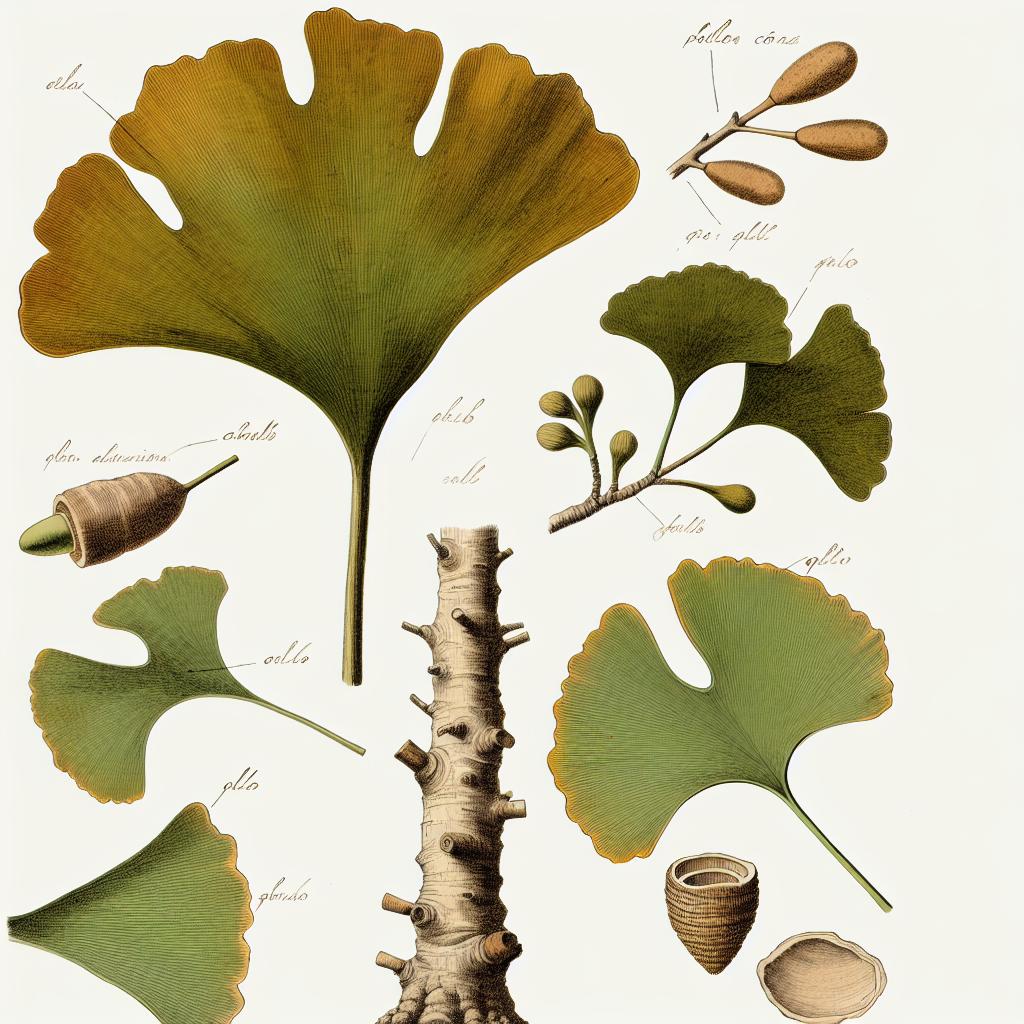Introduction to Ginkgo biloba
The Ginkgo biloba, commonly referred to as the maidenhair tree, stands out as one of nature’s most intriguing botanical anomalies. Known for its evolutionary lineage, this remarkable tree has survived through various geological eras, being cited as a living fossil. With origins tracing back over 200 million years, Ginkgo biloba’s endurance and adaptability reveal much about both its biology and the evolutionary processes that have nurtured its continuity. This article will delve into the distinct botanical characteristics and ecological roles of this remarkable species, which contribute to its continued fascination for botanists and nature enthusiasts alike.
Leaves and Foliage
Central to the identity of Ginkgo biloba are its distinctive leaves. The fan-shaped leaves are immediately recognizable, characterized by their bilobed structure. The dual-lobed design lends the tree its species name “biloba.” The striking foliage is deciduous in nature, adopting a vivid yellow hue during the fall before the leaves are shed in preparation for winter’s dormancy.
Vein Structure
The vein structure of Ginkgo leaves is particularly noteworthy due to its dichotomous venation pattern. Unlike the more common net-like vein structures prevalent in most flowering plants, Ginkgo leaves have a vein system where each vein divides into two repeatedly. This symmetry and branching pattern are reminiscent of ancient plant lineages, highlighting the tree’s primitive origins.
Reproductive Characteristics
Ginkgo biloba possesses a distinct method of reproduction that underscores its evolutionary uniqueness. Classified as a dioecious species, the tree has starkly separate male and female versions, each contributing differently to the reproductive cycle.
Male and Female Trees
The reproductive apparatus of male and female Ginkgo trees illustrates their remarkable biology. Male trees generate small pollen cones. Female Ginkgos, in contrast, develop ovules which, once fertilized, become seeds with a fleshy outer layer. The fleshy seed covering emits a potent odor when it falls to the ground, which can be undesirable in urban settings. Consequently, male trees are often preferred for city planting as they lack the odorous fruit, thereby reducing potential nuisances.
Habit and Growth
Another notable feature of the Ginkgo biloba is its growth habit. The tree is easily identifiable by its conical and symmetrical crown, which offers an aesthetic appeal and structural stability. When grown under optimal conditions, Ginkgo biloba can reach impressive heights between 20 to 35 meters, punctuating cityscapes and natural landscapes alike. The bark of the tree, starting as grayish-brown and evolving to be deeply furrowed with age, further enriches its visual and tactile dimensions.
Tolerance and Longevity
What sets the Ginkgo tree apart from many others is its resilience and adaptability. It can flourish in a diverse range of soil types and exhibits remarkable tolerance to urban environments, including high pollution levels. Additionally, the Ginkgo biloba is extraordinarily disease-resistant, which, combined with its potential lifespan exceeding a thousand years, makes it a favored choice for urban landscapes all over the world. This resilience underscores why Ginkgo has survived through history’s changes, making it a botanical marvel.
Secondary Metabolites
The secondary metabolites found in Ginkgo biloba are yet another point of significance for this tree, contributing to its reputation not only as a botanical specimen but also in the realm of holistic health and medicine. Key compounds, such as ginkgolides and bilobalides, have drawn attention due to their purported health benefits. These compounds have been extensively researched regarding their potential roles in supporting cognitive health and combating certain conditions. These discoveries have fueled the popularity of Ginkgo in both traditional medicine practices and modern herbal supplement industries.
Usage in Traditional and Modern Medicine
Ginkgo biloba’s unique chemical composition has made it a staple in traditional medicine systems for centuries, particularly in Chinese herbal medicine. It has been used to alleviate a range of health issues, from respiratory problems to circulation improvement. In contemporary applications, Ginkgo supplements are marketed for their potential cognitive benefits, with some research supporting claims that these compounds can help improve memory and concentration.
Ecological Impact and Cultivation
Aside from its uses in medicine and urban landscaping, Ginkgo biloba also holds ecological significance. Its survival through various climatic epochs highlights its hardiness. The Ginkgo’s ability to withstand industrial pollution and resist pests and diseases makes it an asset to biodiversity. Cultivation practices worldwide align with the tree’s requirements for sunlit conditions and well-draining soils to ensure successful growth. When planting Ginkgo biloba, cultivators are mindful of spacing requirements to accommodate its mature size and maintenance needs, ensuring the tree’s health and structural integrity.
Conservation and Cultural Significance
Conservation of Ginkgo biloba involves safeguarding diverse genetic stocks to preserve its unique genetic attributes. This conservation is crucial not only for ecological reasons but also due to the tree’s cultural significance in several East Asian countries, where it is often planted near temples and considered a symbol of peace and endurance. Its longevity inspires symbolic uses in literature and art, reflecting its enduring presence in human history.
For those interested in further exploring Ginkgo biloba’s unique characteristics along with its uses in various domains, specialized botanical literature and botanical gardens provide valuable resources. These gardens often prominently feature Ginkgo trees, offering firsthand encounters with this ancient and enduring species.

